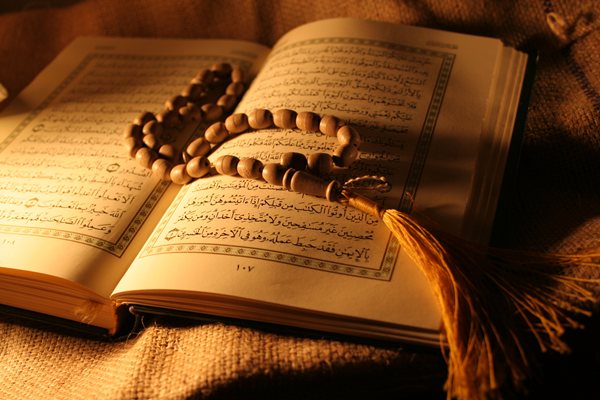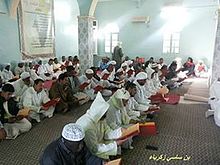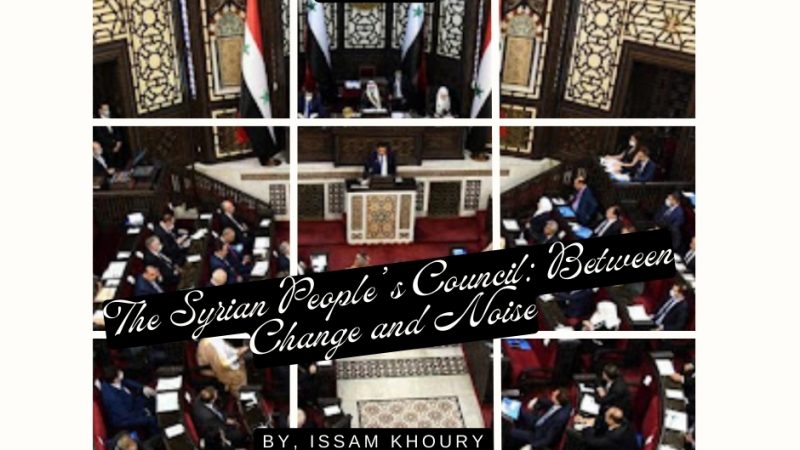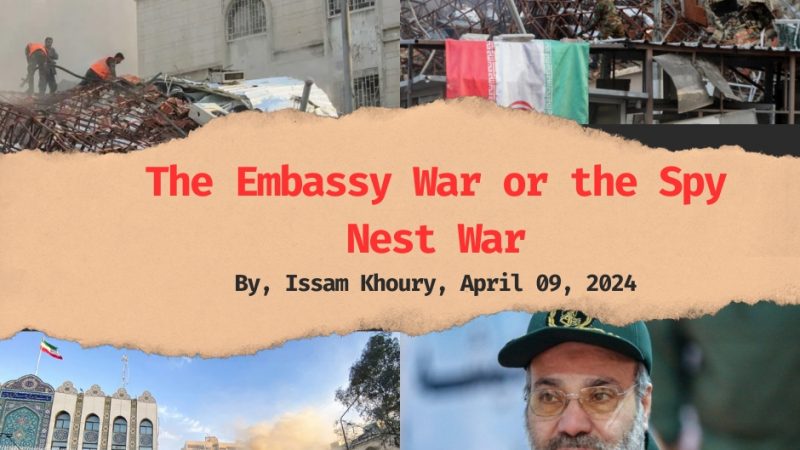AL-KADIRIYE SCHOOL IN SYRIA

By: Issam Khoury, Feb.03.2009
The Qadiriyya is one of the most important religious schools, and where many religious young men in Syria graduate from. With the absence of a clear highlight over this school, one might realize the advantages it presents for the flourishing and increase of the Salafi movements in the area. This is especially so among Kurdish areas and poverty stricken Arab environments. This comes as a result of the absence of consistent governmental censorship or close religious control towards both the graduates and leaders, where there is continuous fear that it might convert
from al-Tasowifiya towards a Jihadi-Salafi school.

The Qadiriyya style:
It is one of the most practiced Sufi doctrines in Syria and Iraq. Its beliefs were founded by Sheikh Abdul-Qadir Gilani, and share common features with other Sufi worshipers (such as al-Nakishbandiye, al-Shathiliye, al-Rifaiye, al-Sirourdiye and al-Akiliye) in the Islamic regions of the Middle East. These Sufis believe religious doctrine achieves a great diffusion throughout the underdeveloped areas. And with distinction between one area and the other, knowing that the Sufi has always endeavored to make knowledge and education as principal companions to reading the Quran, the prophetic Sunna. Prayer, fasting and charity work for the sake of unifying with God through the worship of its members and their mental solitude.
Many Syrian Mashayekh men of religion consider themselves of al-Qadiriyya, as a result of its assemblance and agreement with the other Sufi groups.
Perhaps, the shrine of al-Sheikh Abd al-aziz bin al-sheikh Abd al-Kader al-Kilani in Abd al-Aziz Mountain (which is named after him and located in the Northwestern city of al-Hasake) is the most important residence for Qadiriyyas in Syria at present. The site is visited by many followers of the school, in an attempt to get closer to their new message, and not for the purposes of al-Hajj (Pilgrimage) as is with Muslims who gather in Mecca.
However, many young extremist followers believe in the importance of visiting the shrine which is considered visiting one of the righteous blessed followers of the most glorious and all mighty God.
AL-Sheikh Obeid Allah is the son of al-Sheikh Ahmad al, who is a descendent of Al-Sheikh Abd al-Kader al-Kilani and lives in the city of Amuda. Amuda is 20 km west of the city Qamishli, and 80 km North of al-Hasaka, which is currently one of the most important areas for this belief. The religious school of Al-Sheikh Obeid Allah is packed with hundreds of students, along with thousands of those who visit Amuda on daily means for repentance.
The Qadiriyya way according to Sheikh Ahmad al-Kask:
He, who wishes to enter his school, should pass through the following stages:
Repentance:
This method requires sitting in front of the Sheikh, where the person should be fully convinced by the Qadiriyya practice that he has chosen for himself and should also accept the Sheikh Obedid Allah as his Sheikh and Imam. The Sheikh may or may not shake his hand, but always advises him not to commit any acts of pride or sin. He is always encouraged to pray, to fast, to get closer to God through reading the Quran, commit himself to God and most importantly to be honest in his daily life.

Mentoring sessions:
These take place in Mosques when possible, where the Mosque of Sheikh Obeid Allah or his son al-Sheikh Juneyd is one of the most important religious learning centers. It is situated in the village of Abu Raseyn, in between the cities of Dirbasiye and Ras al-Ayn.
These sessions consist of memorizing the Holy prayers, especially on Friday nights where the Sheikh recites the prayers and the followers repeat after him. However, some prayers are repeated more than hundreds of times and in loud collective voices. It is common that followers carry long rosaries of usually one hundred beads, while others spread huge rosaries with large beads
As for the reason why the room is darkened or the lights are turned off, some followers associate it with the idea that Holy spirits appear to those who believe in God, his prophet and the righteous ancestors, and that angels appear to some others.
Some followers, after finishing the memorization sessions, begin beating tambourines and join in a particular type of dance that is specific to Sufis. This is mostly called Mamdouhi or Mandouhi, and is done along with stabbing their sides, away from the navel, almost opposite the kidney. When a follower of other Sufi beliefs becomes involved in the act, a kind of challenge occurs where stabbing with swords, long skewers and even arrows take place (usually these stabs are done in the abdomen area where the skew or the sword penetrates it to appear from the other side of the body but relatively away from the spine.) Moreover, in cases of extreme enthusiasm, some of them throw themselves in fire pits or walk on them. There are also a few who shoot themselves with actual bullets. Some Muridies followers assure that this act is a kind of magic and that they are only able to do it after seeking permission of the Sheikh and others. They can authorize these aforementioned acts when deemed necessary.
However, the educated among them who have graduated from the Qadiriyya school don’t involve themselves in such methods in order to prove themselves. Instead, they rely on invitation using gentle words and positive advice, along with encouraging people to educate themselves, where most of them are Mosque Sheikhs that are spread in the villages and cities.
Is Qadiriyya an approaching danger?:
It is rather an exaggeration to look at Qadiriyya as an imminent terroristic danger, as it adopts Sufi doctrine and doesn’t abide by Jihadi concepts, as is the case with Islamic Extremist organizations.
However, danger might be seen when some members of this school convert after taking up the Salafi-Jihadi perspective, which utilizes the emotions of extremist Muslim beliefs. Typically, these followers are convinced that supporting and backing the Muslims is an essential part of their wage on doomsday.
Moreover, practice of those Muridies, (followers) might reach the point of delivering their soul (death) if the Sheikh makes that decision. Thus, he might deliver his soul and die when facing a more clear issue, as when supporting their brethren in Islam. This matter becomes quite difficult when the Murid is closely connected with the Sheikh who consistently directs him.
The arrival of many followers from Chechnya, Iraq, Kurdistan and Turkey towards these religious schools is quite significant. However, their Sufi activity could convert towards a field as a natural result of the distance of their Sheiks from these schools, especially that the names of many of them are listed with opposing organizations.
The Turkish Hezbollah hold many followers of Qadiriyya and multiple Kurdish Syrian organizations in Syria have members that follow this doctrine along their family lines. It isn’t particularly unusual then, to witness those previously committed to other doctrines, converting towards this method in the Iraqi-Kurdistan regions.
For instance, the followers of the chief of the Taliban credit Qadiriyya, despite being known as leftist throughout history, where the father of Galal Talabani was one of the Sheikhs in the Qadiriyya school. Whereas, the increase of the followers of this school among Chechen fighters who are looking for independence from Russia, is clearly seen.
Editing by: Adam November



